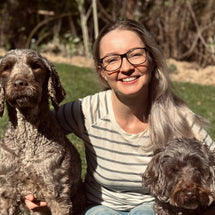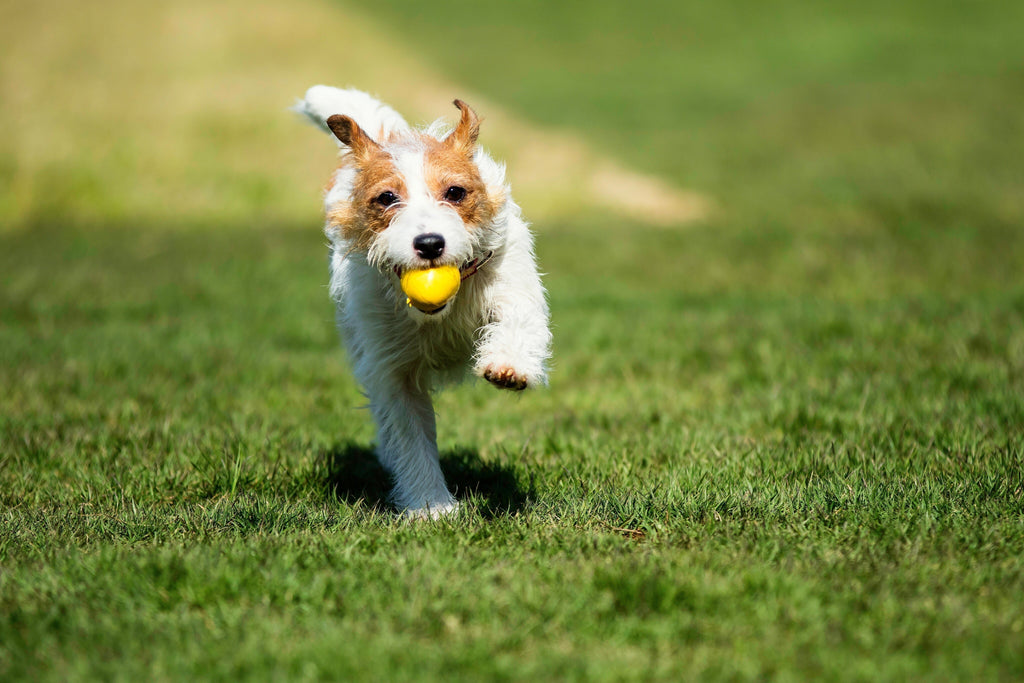Can Dogs Eat Celery? Vet-Approved Safety, Benefits & Serving Guide

Yes, dogs can safely eat celery in moderate amounts. Celery is among the vegetables that are safe for dogs. It’s low in calories, high in water, and rich in fibre, vitamins A, C, and K. It supports hydration, digestion, and can even freshen your dog’s breath.
But it must be served plain, chopped, and only as an occasional treat. Feeding too much celery or giving it in large, stringy chunks can lead to tummy trouble or choking, especially in dogs with smaller mouths like puppies or Maltese Terriers, or brachycephalic breeds.
Key Takeaways: Can Dogs Eat Celery?
|
Is Celery Good for Dogs to Eat?

Celery is widely considered safe for dogs when prepared correctly, but its benefits and risks vary depending on your dog’s size, age, and chewing ability. Supervising and getting the portion size and texture right is key to avoiding digestive issues or choking.
Which Dog Breeds Can Enjoy Celery Safely
|
Breed Type |
Consideration |
Feeding Tip |
| Toy Breeds (e.g., Pomeranians, Chihuahuas) | Small jaw limits chewing ability | Chop finely and remove fibrous strings |
| Brachycephalic Breeds (e.g., Bulldogs, Shih Tzus) | Short snouts make chewing harder | Chop into smaller pieces, or serve lightly steamed |
| Large Breeds (e.g., Labradors, Shepherds) | More likely to swallow large chunks whole | Slice into even, manageable pieces |
| Puppies | Still learning how to chew and prone to choking | Serve cooked, soft, Raw bite-sized portions are okay, but better served cooked |
| Dogs prone to urinary stones (e.g. male small breed dogs, Shih Tzus, Miniature Schnauzers) | High oxalate content | Generally avoid; however, don’t panic if a small amount of raw celery is consumed |
Always supervise during feeding, especially the first time, and stick to plain celery with no salt, oil, or seasoning.
Nutritional Profile of Celery for Dogs
Celery might look simple, but it’s rich in dog-friendly nutrients when served raw or lightly steamed:
|
Nutrient (per 100g) |
Amount |
| Calories | ~14 kcal |
| Water | 95% |
| Fibre | 1.6 g |
| Vitamin A | 449 IU |
| Vitamin C | 3.1 mg |
| Vitamin K | 29.3 mcg |
| Folate | 36 mcg |
| Potassium | 260 mg |
*Source: nutritionvalue.org
Quick Tip: Celery leaves are nutrient-dense but may contain more oxalates and pesticides. Stick to washed stalks unless using organic celery.
Health Benefits of Celery for Dogs
Celery offers more than crunch. Its high water content, low calorie load, and key nutrients make it a valuable treat for hydration, digestion, and weight support, especially for dogs on a restricted or low-fat diet.
-
Supports Hydration and Weight Control
-
95% water content helps dogs stay hydrated during warm Australian summers.
- Only 14 kcal per 100g, ideal for dogs on calorie-restricted or weight-loss diets.
- Safe alternative to commercial treats, especially for overweight or less active dogs.
-
95% water content helps dogs stay hydrated during warm Australian summers.
-
Freshens Breath and Aids Oral Health
-
Crunchy texture promotes chewing, helping to naturally clean teeth.
- May improve breath freshness without added sugars or chemicals found in processed snacks.
- Not a replacement for brushing, but useful between dental cleanings.
-
Crunchy texture promotes chewing, helping to naturally clean teeth.
-
Digestive and Anti-Inflammatory Support
-
Fibre (1.6g per 100g) supports gut motility and bowel regularity.
-
Natural antioxidants and flavonoids may help reduce inflammation
- Ideal as part of a high-fibre rotation for dogs on raw or grain-free diets.
-
Fibre (1.6g per 100g) supports gut motility and bowel regularity.
What Veterinary Experts Say About Celery in a Dog’s Diet

Veterinarians in Australia confirm celery is non-toxic and appropriate as a low-calorie treat for dogs when fed plain, in moderation, and chopped to suit the dog's size. It’s especially useful for dogs on weight-control diets or needing more fibre variety.
Vets recommend steaming celery for puppies, dogs that have had many teeth removed, or flat-faced breeds that struggle with chewing. For dogs with existing digestive issues, celery may cause bloating or loose stool, so it should be introduced gradually and only under supervision.
Veterinary Tips for First-Time Celery Feeders:
-
Start small: 5-cent coin-sized piece for toy breeds; 2-3 cm chunks for larger dogs
-
Steam if needed: For dogs with sensitive digestion or dental issues
-
Remove strings: Reduce choking risk, especially for puppies and brachycephalic breeds
-
Avoid additives: No salt, butter, oil, or seasoning
-
Watch closely: Monitor stools, skin, and appetite over 24–48 hours
- Supervise feeding: Especially for small, young, or short-snouted dogs
Tip: If your dog has dental issues or a sensitive gut, check with your vet before adding celery.
Serving Celery to Dogs the Right Way

The way celery is served directly affects your dog’s safety and how well they digest it. Texture, cut size, and plant part all play a role. The best method depends on your dog’s age, breed, and chewing ability.
Raw vs Cooked: Choosing the Best Preparation
Both raw and steamed celery are safe for dogs. The best option depends on their chewing strength and digestive sensitivity.
|
Preparation |
Benefits |
Risks |
Best For |
| Raw | Crunchy, helps clean teeth, retains nutrients | Firm higher choking risk if cut too big | Healthy adult dogs with strong jaws |
| Steamed | Soft, easier to chew, gentler on digestion | Slight loss of vitamin C and K | Puppies, small breeds, and dogs with dental or gut issues |
Always cut raw celery into small, manageable pieces and remove the strings before serving.
Portion Sizes for Different Dog Breeds
Celery should only make up part of the 10% daily treat allowance. Portion sizes depend on your dog’s weight and chewing habits.
|
Dog Size |
Max Celery (per day) |
Preparation Tips |
| Small (≤10kg) | 1-2 thin slices (~¼ cup) | Dice into 1 cm cubes, remove all strings |
| Medium (10-25kg) | 2-4 slices (1/2 cup) | Cut into 2-3cm bite-sized half-moons or thin strips |
| Large (25kg+) | Up to 1 cup chopped | Larger chunks OK, but keep slices even and string-free |
Tip: Always supervise your dog when feeding celery, regardless of breed or size.
Can Dogs Eat Celery Leaves or Drink Celery Juice?
Celery leaves and juice are generally not harmful, but there’s no need to give juice to dogs.
- Leaves: Rich in calcium and vitamin C but high in oxalates, which may irritate dogs with kidney conditions. Use only a small amount, finely chopped and mixed into food.
- Juice: Lacks fibre and may concentrate nitrates. In concentrated amounts, nitrates are harmful to dogs, but they’d have to drink a lot of celery juice before you need to worry. Juice offers very few benefits and may upset sensitive stomachs. Don’t give your dog fruit juice mixes, as these are too sugary and may even contain harmful additives.
Best choice: Washed celery stalks, chopped to suit your dog’s size. Avoid seasoning. Limit the leaves, and no need for juice.
How Celery Fits Into a Balanced Canine Diet
Celery complements a balanced diet as a crunchy, low-calorie snack—not as a primary food source. It provides hydration and fibre variety but lacks the protein, fats, and amino acids required for long-term health.
Use celery to:
- Replace processed treats for overweight or sedentary dogs
- Add fibre variety in raw or grain-free diets
- Support hydration in warmer months
- Follow the 10% treat rule: celery + other treats = max 10% of daily calorie intake
Important: Pair celery with a complete, vet-approved diet like Petzyo to ensure nutritional balance.

Signs Your Dog is Enjoying Celery Safely
Not every dog will tolerate celery the same way. After feeding it for the first time, watch for these clear signs that your dog is digesting and enjoying it safely:
- Chews celery thoroughly without gagging or coughing
- Passes normal stools with no signs of diarrhoea or constipation
- Shows interest in eating and maintains regular energy levels
- No visible bloating, gas, vomiting, or itchiness
- Breath smells cleaner after chewing raw celery
If you notice any digestive upset or changes in behaviour, stop feeding and contact your vet. Small signs often signal food intolerance or overfeeding.
Is Celery Healthier for Dogs Than Store-Bought Treats?
Celery can be a healthier alternative to many commercial dog treats, especially those high in fat, salt, artificial additives, or sugar. With only 14 kcal per 100 grams, zero preservatives, and high water content, celery supports hydration, oral hygiene, and weight control, unlike many processed snacks.
However, celery isn’t nutritionally complete. It lacks essential proteins, fats, and micronutrients that high-quality, vet-formulated dog food or balanced treats provide. Treats like air-dried meats, single-ingredient chews, or vet-approved dental sticks offer more protein and functional value than celery alone.
Celery vs Typical Commercial Treats
|
Attribute |
Celery |
Average Store-Bought Treat |
| Calories (per 100g) | 14 kcal | 300-450 kcal |
| Protein | Very low | Moderate to high |
| Preservatives/Fillers | None (if fresh) | Often present |
| Hydration Benefit | High (95% water) | Low |
| Fibre Content | Moderate | Varies widely |
| Suitability for Weight Loss | Ideal in small amounts | Often unsuitable unless labelled |
For Aussie dog owners: Celery makes a great occasional snack, but for complete nutrition, lean proteins like kangaroo or vet-approved treats are better choices.
Is Celery Safe for All Dogs? Risks and Safe Feeding Tips

Celery is generally low-risk when prepared properly, but not all dogs tolerate it the same way. Dogs with chewing difficulties, small airways, or sensitive stomachs may experience issues. Risks increase when celery is served raw in large or stringy pieces or fed in excess.
Choking Hazards for Puppies and Small Breeds
Raw celery can pose a choking risk due to its firm texture and fibrous strings, especially in puppies and small breeds with narrow airways.
How to prevent it:
- Cut into 0.5-1 cm cubes
- Remove all strings
- Steam for dogs with weak jaws or chewing issues
- Supervise the entire time they eat
Tip: Avoid raw celery for toy breeds unless it’s finely chopped and softened.
Possible Allergies or Digestive Discomfort
While uncommon, some dogs may show signs of intolerance after eating celery, especially if overfed or introduced suddenly.
Watch for:
-
Soft stools or diarrhoea
-
Red, itchy skin
-
Bloating or excessive gas
- Vomiting after eating
If symptoms appear, stop feeding and consult your vet. Always introduce new foods slowly and monitor closely for the first 24-48 hours.
Celery vs. Vet-Formulated Dog Food: Which Is Best?
Celery is a safe and hydrating snack, but it’s not a substitute for complete, vet-formulated dog food. Dogs require balanced levels of protein, fats, vitamins, minerals, and amino acids for long-term health. Celery simply doesn’t meet those needs.
Vet-Formulated Dry Dog Foods
Natural Snacks vs Complete Nutritional Solutions
Celery and similar snacks (like cucumbers or carrots) can be great low-calorie add-ons, but they’re not designed to fuel your dog’s daily energy, muscle maintenance, or immune health.
|
Aspect |
Celery (Natural Snack) |
Vet-Formulated Dog Food |
| Nutritional Scope | Limited (mostly water and fibre) | Complete and balanced |
| Protein Content | Negligible | Supports muscle repair and energy |
| Feeding Purpose | Occasional treat or supplement | Main food source, fed daily |
| Digestive Impact | High water and fibre; may cause gas if overfed | Formulated for optimal gut health |
| Oxalate content | High (10mg/1cup) | Low |
Verdict: Natural snacks are useful in moderation, but they should always complement, not replace, a well-balanced dog food plan.
Comparing Petzyo to Celery for Long-Term Health
Petzyo meals are formulated by vets and canine nutritionists to meet 100% of your dog’s daily nutritional needs. While celery may offer hydration and crunch, Petzyo provides everything your dog needs for long-term vitality.
|
Aspect |
Celery |
Petzyo Premium Dog Food |
| Ingredient Quality | Fresh, but may contain pesticides | Human-grade meats and locally grown produce |
| Nutrient Density | High water, low protein | Balanced proteins, healthy fats, complete vitamins |
| Consistency | Varies by stalk and source | Guaranteed formula and complete nutrition |
| Digestibility | May be hard to digest if stringy | Formulated for easy absorption and gut support |
| Ease of Feeding | Requires prep and portioning | Ready to serve; no prep needed |
Support your dog’s health and Aussie businesses by choosing meals that deliver complete, clean nutrition, every time.
Best Healthy, Vet-Approved Dog Snacks in Australia

When you’re looking for a wholesome alternative to celery or just want variety, these vet-approved snacks offer both taste and nutritional value without the harmful additives.
Whole Food Vegetables That Make Safe Dog Treats
In addition to celery, try these dog-safe vegetables and fruits:
-
Carrots: Crunchy, good for teeth, high in beta-carotene
-
Green Beans: Low-cal, high-fibre, good for weight management
-
Pumpkin: Soothes digestion, rich in vitamins A & E
-
Cucumbers: Hydrating, especially during hot Aussie summers
- Blueberries: Antioxidant-packed, perfect for occasional rewards
Always wash thoroughly, cut into bite-sized pieces, and serve plain—no seasoning.
Clean Label Criteria for Natural Snacks
Whether it’s a commercial treat or a packaged veggie snack, read the label carefully. Choose products with:
-
No artificial colours or flavours
-
No chemical preservatives (e.g., BHA, BHT)
-
No added sugars or sweeteners
-
No low-quality fillers (e.g., wheat middlings, corn)
- Clearly listed whole-food ingredients
Pro tip: If you can’t pronounce it or wouldn’t eat it yourself, it probably doesn’t belong in your dog’s bowl.
High-Quality Local Alternatives to Celery
Some dogs benefit from higher-protein or longer-lasting snacks that vegetables like celery cannot offer. In such cases, nutrient-dense, single-ingredient options may be more suitable, particularly for dogs with food sensitivities or high energy requirements.
Here are a few locally made, natural alternatives that align with health-first feeding:
-
Air-Dried Kangaroo Jerky: A lean, hypoallergenic protein suitable for sensitive stomachs
-
Sweet Potato Chews: High in fibre and naturally rich in vitamin A for strong tooth enamel
- Fish Skins: A natural source of Omega-3 DHA fatty acids to support joints and coat condition
Choosing Australian-made treats also supports local agriculture and reduces reliance on heavily processed imports.
Why Pet Owners in Australia Trust Petzyo for Dog Health

Aussie pet parents are increasingly choosing dog food brands that align with both health and sustainability. Petzyo stands out by offering vet-approved nutrition, clean ingredients, and eco-conscious practices, tailored to the lifestyle of modern dog owners across Australia.
Sustainable and Ethical Ingredient Sourcing
Petzyo formulates its meals using locally sourced, high-quality ingredients that support Australian farmers and minimise environmental impact. All ingredients are free from artificial additives and selected for optimal canine health.
- Ingredient sourcing prioritises local, seasonal, and sustainable farming
- All packaging is 100% recyclable, reducing landfill waste
- The supply chain is optimised to lower carbon emissions and food miles
By feeding Petzyo, you're making a conscious choice for both your dog and the environment.
Options for Sensitive Stomachs and Food Allergies
Many dogs suffer from sensitivities caused by intolerance to common ingredients like specific animal proteins, wheat, corn, soy, or artificial additives. Petzyo’s limited-ingredient, hypoallergenic recipes, such as our kangaroo-based dog kibble, are developed specifically for dogs with sensitive digestion or itchy skin.
✅ Novel single animal protein options (Kangaroo, Turkey or BSFL)
✅ No wheat, soy, dairy, or artificial preservatives
✅ Formulated with canine nutritionists and veterinarians
✅ Suitable for dogs prone to bloating, loose stools, or food-related itching
Petzyo offers targeted nutrition that supports gut health, skin barrier function, and immune balance, without compromising on flavour or convenience.
Flexible Subscription Options for Urban Dog Owners
For pet parents balancing city life and busy schedules, Petzyo’s flexible delivery system ensures dogs are well-fed without last-minute runs to the store.
- Pause, skip, or cancel anytime from your account
- One-time purchase or custom recurring plans available
- Tailored feeding guides based on your dog’s weight, age, and lifestyle
- Doorstep delivery to Sydney, Melbourne, Brisbane, and more
- Earn Paw Rewards for every order
With Petzyo, you get consistency, convenience, and confidence, whether you're home or on the go.
FAQs About Dogs Eating Celery

Is Celery Safe for Diabetic Dogs?
Yes, celery is safe for diabetic dogs in small portions. Celery is low in sugar and carbohydrates, making it suitable for diabetic dogs, but always check with your vet before making changes to a diabetic dog’s diet.
Can Celery Freshen a Dog's Breath?
Yes, celery can help freshen a dog's breath. Celery’s crunchy texture helps reduce food particles, and its water content promotes saliva flow, which can improve breath freshness. However, celery is not a substitute for dental cleaning.
Does Celery Make Dogs Urinate More?
Yes, celery can make dogs urinate more. Celery has a high water content and acts as a mild diuretic, so dogs may urinate more after eating it. This is normal and not harmful when fed in moderation.
What Parts of Celery Should Dogs Avoid?
Dogs should avoid the fibrous strings of celery stalks. These can cause choking or digestive issues in some less discerning doggos. The best way to feed celery is to serve only the cleaned stalk, finely chopped, and limit the leaves due to oxalate content.
Healthy Dogs Go Beyond Celery: Try Petzyo’s Balanced Meals

Celery makes a light, hydrating snack, but it’s not a substitute for complete, balanced nutrition. For lasting health, dogs need consistent sources of protein, essential fats, amino acids, and vitamins that go far beyond what vegetables can provide.
That’s where Petzyo comes in. Every Petzyo meal is vet-formulated, rich in functional nutrients, and made with locally sourced ingredients that support your dog’s health from puppyhood through to their senior years.
-
Complete nutrition in every bowl
-
No fillers, preservatives, or artificial additives
-
Designed to support skin, gut, joint, and immune health
- Flexible delivery options for busy Aussie pet parents
Whether you’re feeding a playful pup or a gentle senior, Petzyo ensures they get everything they need, with room for the occasional crunchy celery treat.
Explore Petzyo’s meal plans and feed your dog the way nature and your vet intended.





